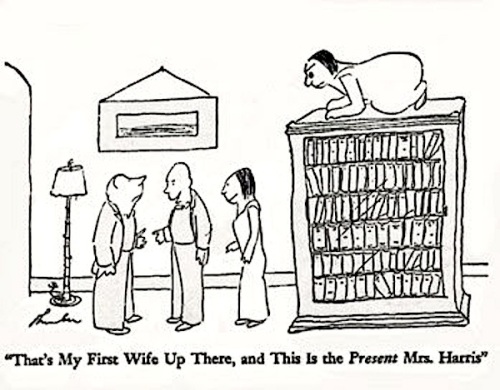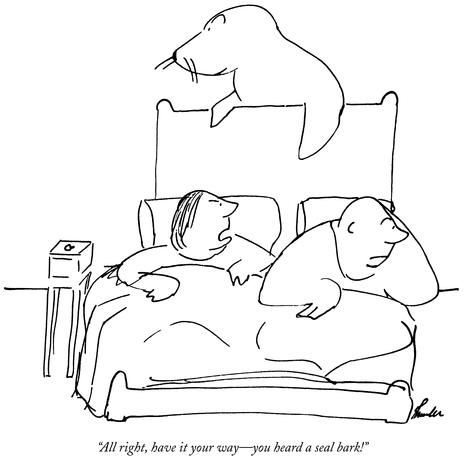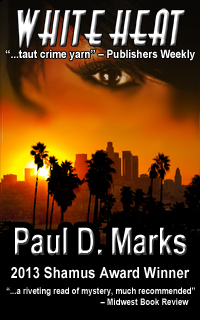As a movie lover
and a music lover, I've always been intrigued by scores and soundtracks. I don't think it's a coincidence that most of the movies I like to watch over and over again are the ones that have what I think is good music. Maybe it's not of vital importance, but it sure helps. Italian director Sergio Leone once said, "It is the music that elevates a movie to greatness."
Masters and commanders
Like many of you, when I walk into a bookstore or go to Amazon.com, I find myself looking first for books by writers I'm already familiar with, writers I know I'll like reading. For me it's novelists like Nelson DeMille, Joe Lansdale, Carl Hiaasen, Greg Iles, Martin Cruz Smith, Lee Child, Nevada Barr, Stephen King, and several others. I have such confidence in those authors I know I'll probably enjoy whatever they write.
It's almost the same with film directors. There are some I like and respect, and when I see one of their names beside a movie, I'll usually watch it. Scorsese, Spielberg, Hitchcock, Carpenter, Joel and Ethan Coen, Ridley Scott, James Cameron, J. J. Abrams, Richard Donner, Frank Darabont, John McTiernan, and--believe it or not--Quentin Tarantino. Sometimes I'm disappointed, but not usually. I'm also especially fond of some composers: John Barry, John Williams, Carter Burwell, James Newton Howard, James Horner, Lalo Schifrin, Mancini, Zimmer, Herrmann, Morricone, Goldsmith, etc., etc.
Creative teamwork
If you're strange enough to be interested in that kind of thing, I'm sure you've noticed that some--if not most--directors choose to work with the same composers, again and again. And because I honestly couldn't think of anything else to write about today . . . here's a list of sixty of those collaborations, along with some of their resulting movies.
First, my top-ten favorite director/composer combinations:
1. Steven Spielberg / John Williams --
E.T., Raiders of the Lost Ark, Jaws, Schindler's List, Jurassic Park, Close Encounters of the Third Kind
2. Sergio Leone / Ennio Morricone --
A Fistful of Dollars; A Few Dollars More; The Good, the Bad, and the Ugly; Once Upon a Time in the West; Once Upon a Time in America
3. Robert Zemeckis / Alan Silvestri --
Forrest Gump, Romancing the Stone, Contact, The Polar Express, Cast Away, Back to the Future
4. Alfred Hitchcock / Bernard Herrmann --
Vertigo, North by Northwest, The Wrong Man, Torn Curtain, Marnie, Psycho
5. David Lean / Maurice Jarre --
Doctor Zhivago, Ryan's Daughter, Lawrence of Arabia, A Passage to India
6. Blake Edwards / Henry Mancini --
The Pink Panther, A Shot in the Dark, Breakfast at Tiffany's, Peter Gunn, 10, The Great Race, Days of Wine and Roses
7. John Carpenter / John Carpenter --
Escape From New York. Dark Star, The Fog, Vampires, Assault on Precinct 13, Halloween
8. M. Night Shyamalan / James Newton Howard --
Signs, The Sixth Sense, Unbreakable, Lady in the Water, The Village
9. The Coen Brothers / Carter Burwell --
The Big Lebowski, Blood Simple, Raising Arizona, True Grit, Miller's Crossing, Fargo
10. Ron Howard / James Horner --
Apollo 13, Cocoon, Willow, Ransom, The Missing, A Beautiful
Mind
If you're not fed up with all this by now, here are fifty more director/composer teams that might be familiar:
Tim Burton / Danny Elfman --
Edward Scissorhands, Big Fish, Beetlejuice, Batman
Michael Curtiz / Max Steiner --
Virginia City, Yankee Doodle Dandy, Mildred Pierce, Casablanca
Alfred Hitchcock / Dmitri Tiomkin --
Shadow of a Doubt, Strangers on a Train, Dial M for Murder
Frank Capra / Dmitri Tiomkin --
It's a Wonderful Life, Lost Horizon, Mr. Smith Goes to Washington
Howard Hawks / Dmitri Tiomkin --
Red River, Only Angels Have Wings, Rio Bravo
Joel Shumacher / James Newton Howard --
Falling Down, Flatliners, Dying Young
Lawrence Kasdan / James Newton Howard --
Wyatt Earp, Grand Canyon, French Kiss, Mumford
John Huston / Alex North --
The Misfits, Under the Volcano, Prizzi's Honor
Sam Peckinpah / Jerry Fielding --
The Wild Bunch, Straw Dogs, The Getaway
James Cameron / James Horner --
Avatar, Titanic, Aliens
Edward Zwick / James Horner --
Glory, Legends of the Fall, Courage Under Fire
Sydney Pollack / Dave Grusin --
Three Days of the Condor, Absence of Malice, The Firm, Tootsie
Stanley Cramer / Ernest Gold --
On the Beach, Inherit the Wind, Ship of Fools
Tony Scott / Hans Zimmer --
Days of Thunder, True Romance, The Fan, Crimson Tide
Christopher Nolan / Hans Zimmer --
The Dark Knight, Inception, The Man of Steel, Dunkirk
Ron Howard / Hans Zimmer --
Backdraft, The Da Vinci Code, Angels & Demons, Inferno
Ridley Scott / Hans Zimmer --
Thelma and Louise, Hannibal, Black Hawk Down, Gladiator
Penny Marshall / Hans Zimmer --
A League of Their Own, Renaissance Man, The Preacher's Wife
Gary Marshall / John Debney --
The Princess Diaries, Valentine's Day, Raising Helen
Paul Mazursky / Bill Conti --
An Unmarried Woman, Blume in Love, Harry and Tonto
John G. Avildson / Bill Conti -- Rocky, The Karate Kid, Lean on Me, 8 Seconds
Clint Eastwood / Lennie Neihaus --
Mystic River, Million Dollar Baby, Unforgiven
Peter Jackson / Howard Shore -- the
Lord of the Rings trilogy, the
Hobbitt trilogy
David Cronenberg / Howard Shore --
The Fly, Crash, A History of Violence
Martin Scorcese / Howard Shore --
Gangs of New York, The Aviator, The Departed, Hugo
Martin Scorcese / Elmer Bernstein --
The Grifters, Cape Fear, The Age of Innocence
Robert Mulligan / Elmer Bernstein --
To Kill a Mockingbird, Love With the Proper Stranger
Evan Reitman / Elmer Bernstein --
Ghostbusters, Stripes, Animal House
George Roy Hill / Elmer Bernstein --
Hawaii, Slap Shot, Funny Farm. Thoroughly Modern Millie
J. J. Abrams / Michael Giacchino --
Lost, Fringe, Alias, Star Trek, Super 8
Billy Wilder / Andre Previn --
Irma La Douce; Kiss Me, Stupid; The Fortune Cookie
Billy Wilder / Miklos Rozsa --
Double Indemnity, Five Graves to Cairo, The Lost Weekend
Don Siegel / Lalo Schifrin --
Dirty Harry, Coogan's Bluff, The Beguiled, Charley Varrick
Kenneth Branagh / Patrick Doyle --
Hamlet, Henry V, Sleuth, Dead Again
Mel Brooks / John Morris --
Blazing Saddles, Spaceballs, Young Frankenstein
Cameron Crowe / Nancy Wilson --
Almost Famous, Elizabethtown, Jerry Maguire
John Milius / Basil Poledouris --
Red Dawn, Flight of the Intruder, Conan the Barbarian
Franklin J. Schaffner / Jerry Goldsmith --
Planet of the Apes, Patton, Lionheart, Papillon
Joe Dante / Jerry Goldsmith --
Gremlins, The Burbs, Innerspace
Robert Aldrich / Frank De Vol --
The Flight of the Phoenix, The Longest Yard, The Dirty Dozen
Bryan Singer / John Ottman --
The Usual Suspects, Superman Returns, Jack the Giant Slayer
Mark Rydell / John Williams --
The Reivers, The Cowboys, The River, Cinderella Liberty
Oliver Stone / John Williams --
JFK, Nixon, Born on the Fourth of July
Irwin Allen / John Williams --
The Towering Inferno. Lost in Space, The Poseidon Adventure
George Lucas / John Williams --
Star Wars episodes I, II, III, and IV
Sam Mendes / Thomas Newman --
Skyfall, American Beauty, Road to Perdition, Jarhead
Steven Soderbergh / David Holmes --
Ocean's Eleven, Out of Sight, Haywire, Logan Lucky
Peter Weir / Maurice Jarre --
Witness, Dead Poets Society, The Year of Living Dangerously
Anthony Harvey / John Barry --
The Lion in Winter, They Might be Giants. The Glass Menagerie

And #50: I'm cheating here, but composer
John Barry teamed with four different directors (
Guy Hamilton, Terence Young. Lewis Gilbert, and John Glen) for the following James Bond scores:
Goldfinger, Thunderball, From Russia With Love, You Only Live Twice, Moonraker, Octopussy, A View to a Kill, The Living Daylights, Diamonds Are Forever, and
The Man With the Golden Gun.
There are of course many other collaborations, both foreign and here at home, but these are the ones that came to mind.
Trivial matters
In looking around for this director/composer information, I found the following little-known (to me, at least) facts:
For Sergio Leone's movies, his former schoolmate Ennio Morricone usually wrote the score first and then Leone shot the film to fit the music, rather than doing it the other way around.
Besides John Carpenter, several directors have served the double-duty of also composing the music for some of their films. Among them are Clint Eastwood and Anthony Hopkins.
When John Williams first played the
Jaws theme on his piano, Spielberg burst into laughter and thought it sounded ridiculous. Two years later, Williams went through 300 versions of the five-note
Close Encounters theme before Spielberg was happy. (Mostly, though, they seem to agree: They've made 28 movies together.)
Bernard Herrmann served as "sound consultant" on Hitchcock's
The Birds, which used electronic bird noises instead of music. (More on this in a minute.)
Danny Elfman composed the music for Tim Burton's
The Nightmare Before Christmas AND sang Jack Skellington's singing parts.
Max Steiner composed 11 other film scores the same year he scored
Gone With the Wind.
Hans Zimmer and James Newton Howard shared composing duties for some of
The Dark Knight. Zimmer wrote the themes for the Joker, and Howard wrote the themes for Batman.
Henry Mancini composed the music for 38 movies and TV series for director Blake Edwards.
Robert Zemeckis and Alan Silvestri decided not to have any music
at all during the entire time Tom Hanks was stranded on the island in
Cast Away. The score begins only when the castaway sails away. (Other well-known films had
no music:
Rope,
Fail-Safe,
Dog Day Afternoon, etc.)
John Williams is the most Oscar-nominated person alive today (51 nominations). His 1977
Star Wars score remains the highest-grossing instrumental-only soundtrack of all time.
James Horner said, about his score for
Titanic, "I probably wrote all the material in about three hours. The themes literally came to me in twenty minutes."
Questions
What are your favorite story/music collaborations? Do you ever choose movies based on the director, or even the composer? If so, does that ever backfire? I can think of a few big mistakes I've made, using that approach (
Exorcist II, Batman & Robin, The Last Airbender, etc.). Are you a film-score fan, or does the music in a movie not matter that much to you? Do you ever find yourself humming theme music instead of "real" songs?
Wait--is that a fin I see in the water? DUMdumDUMdumDUMdum …
















































